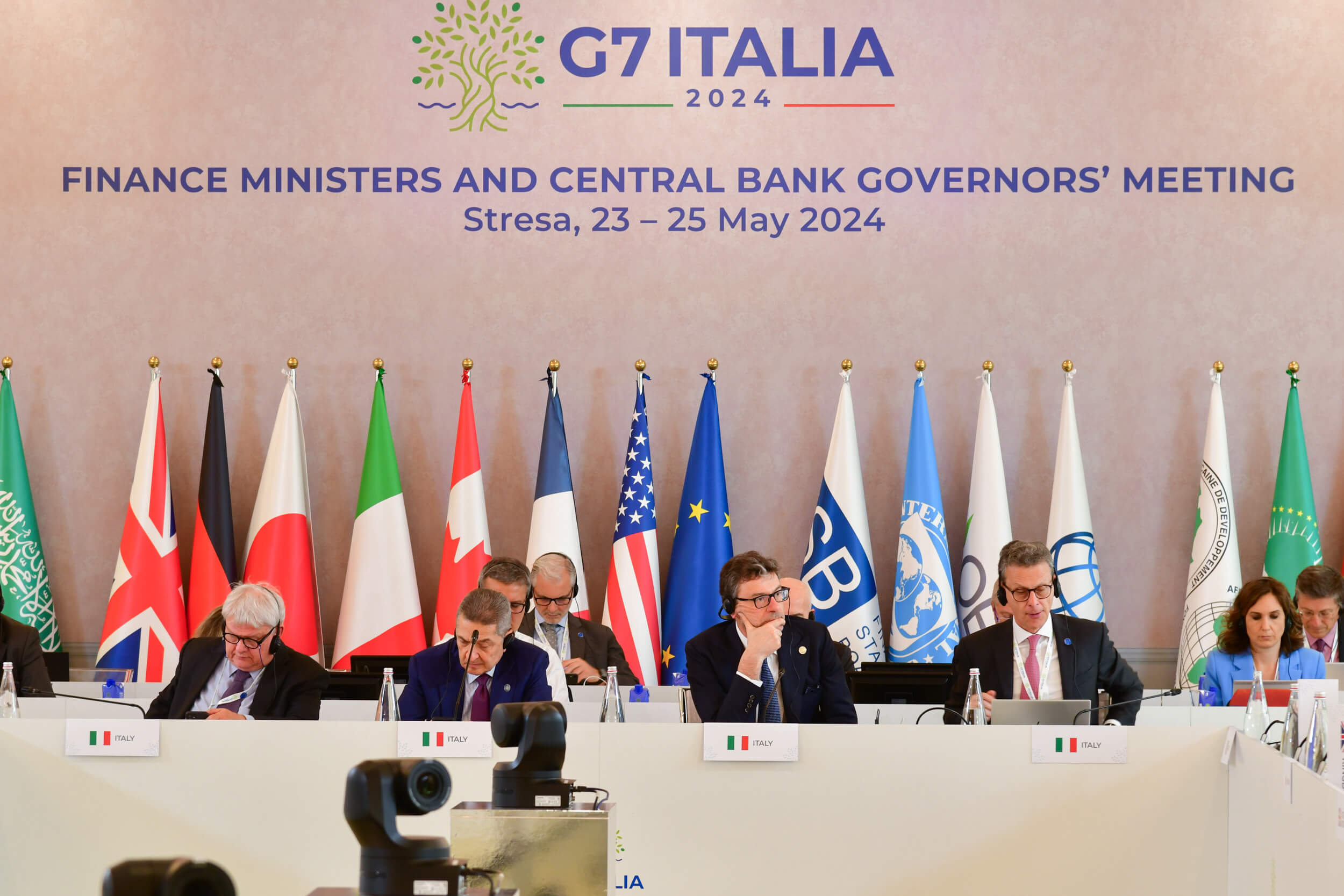Finance
Multi Cap Mutual Funds Help You To Grow Wealth

Investing in multi cap mutual funds provides a diversified approach to wealth accumulation, harnessing growth across various market segments. By allocating assets across large, mid, and small-cap stocks, these funds balance risk and reward, making them an ideal choice for investors looking to enhance their financial portfolio.
This guide delves into the advantages of multi cap mutual funds, illustrates how to effectively use a Systematic Investment Plan Calculator, and explores strategies to navigate fees and expenses for optimal investment growth.
Understanding Multi Cap Mutual Funds
Multi cap mutual funds invest in a broad range of companies with varying market capitalization. This diverse allocation not only spreads risk but also taps into the growth potential of different market segments.
Here are several reasons why these funds are beneficial:
- Diversified Investment Exposure: Multi cap funds are not restricted to one type of stock or market sector, which mitigates risk and provides a smoother investment experience.
- Flexibility and Adaptability: Fund managers of multi cap funds adjust allocations based on changing market conditions, shifting funds to the most promising sectors.
- Potential for Higher Returns: By investing in a mix of small, mid, and large-cap stocks, these funds aim to combine the stability of large caps with the growth potential of small caps.
Using a Systematic Investment Plan Calculator
A Systematic Investment Plan (SIP) allows investors to contribute a fixed amount regularly to their chosen mutual fund, benefiting from dollar-cost averaging and reducing the impact of volatility. A Systematic Investment Plan Calculator can help you determine the potential returns on your SIP investments in multi cap mutual funds. By inputting different variables such as the SIP amount, duration, and expected rate of return, you can plan your investments to align with your financial goals effectively.
Navigating Fees and Expenses
To maximize the returns from multi-cap mutual funds, investors must understand and manage associated fees and expenses:
- Management Fees: These are charged for professional fund management and are typically a percentage of the assets under management. While necessary, it’s vital to ensure these fees are competitive.
- Expense Ratio: This includes all annual operating costs of the fund, expressed as a percentage of average net assets. A lower expense ratio can significantly enhance long-term investment returns.
- Exit Load: Some funds charge a fee for withdrawals within a specific period. Understanding these charges is crucial for timing your investments and withdrawals.
- Performance Comparison: Utilize fee calculators to see how different fee structures impact your investment outcomes. Comparing various multi-cap funds based on fees and past performance can guide in selecting the right fund.
Strategic Tips for Investing in Multi-Cap Mutual Funds
Investing in multi-cap mutual funds can be a rewarding strategy for building wealth over the long term. These funds offer a diversified approach to investing across different market segments, providing investors with exposure to companies of varying sizes and industries. However, to maximize the benefits of multi cap funds, it’s essential to adopt a strategic approach. Here are some tips to consider when investing in multi-cap mutual funds:
- Assess Your Risk Tolerance: Before investing in multi cap mutual funds, it’s crucial to assess your risk tolerance. Multi cap funds invest in a mix of large, mid, and small-cap stocks, which can result in higher volatility compared to funds that focus solely on large-cap stocks. Determine your risk appetite and choose funds that align with your investment objectives and comfort level with market fluctuations.
- Understand Fund Objectives and Strategy: Each multi-cap mutual fund has its own investment objectives and strategy. Some funds may focus on growth stocks, while others may prioritize value or dividend-paying stocks. Before investing, carefully review the fund’s prospectus to understand its investment approach, sector allocations, and historical performance. Choose funds that align with your investment goals and preferences.
- Evaluate Fund Manager Expertise: The expertise and track record of the fund manager play a significant role in the success of a multi-cap mutual fund. Research the fund manager’s background, experience, and investment philosophy. Look for managers with a proven track record of successfully navigating different market conditions and generating consistent returns for investors.
- Diversify Your Portfolio: While multi-cap mutual funds provide diversification within a single fund, it’s essential to diversify your overall investment portfolio across different asset classes and investment strategies. Consider incorporating other types of mutual funds, such as bond funds or international funds, to further diversify your portfolio and reduce risk.
- Take a Long-Term Perspective: Multi-cap mutual funds are best suited for investors with a long-term investment horizon. These funds may experience short-term volatility due to market fluctuations, but historically, they have delivered attractive returns over the long term. Avoid making knee-jerk reactions to short-term market movements and focus on the fundamentals of your investment strategy.
- Regularly Monitor Your Investments: Stay informed about the performance of your multi-cap mutual funds and monitor them regularly. Review your investment portfolio periodically to ensure that it remains aligned with your investment goals and risk tolerance. Consider rebalancing your portfolio if necessary to maintain your desired asset allocation.
- Consult with a Financial Advisor: If you’re unsure about which multi-cap mutual funds to invest in or how to construct a diversified investment portfolio, consider seeking advice from a qualified financial advisor. A financial advisor can help you assess your financial goals, risk tolerance, and investment options, and develop a customized investment strategy that aligns with your needs.
By following these strategic tips, you as an investor can harness the potential of multi-cap mutual funds to build wealth over the long term while managing risk effectively. Remember to conduct thorough research, diversify your portfolio, and maintain a long-term perspective to achieve your investment objectives.
Conclusion
Multi cap mutual funds present a practical avenue for wealth creation, harnessing the diverse potentials of different market capitalization. Employing resources like a Systematic Investment Plan Calculator empowers investors to make astute, well-informed choices in their investment endeavors.
It’s crucial to grasp the expenses tied to your investments and select funds that resonate with your financial aims for prosperity. Armed with effective strategies, multi cap mutual funds emerge as formidable tools for fostering long-term wealth growth. For effortless management of your mutual fund investments, consider downloading the Bajaj Finserv App. Download Bajaj Finserv App today to streamline your investment journey and pave the path to financial success.
Finance
Common Pitfalls to Avoid in Future and Option Trading

Trading involves buying and selling financial instruments such as stocks, bonds, or commodities to profit from price fluctuations. Understanding common mistakes in this area is crucial to avoid significant financial losses. Hence, seamless trading is essential for maximising profits and minimising risks.
Many traders fall into similar traps, leading to preventable errors that could have been avoided with the proper knowledge. This article outlines critical pitfalls in future and options trading and provides strategies to prevent them. By reading this, you will be better equipped to navigate the complexities of the market and achieve tremendous trading success.
Overleveraging: A Double-Edged Sword
Overleveraging is a common pitfall of options trading that can lead to catastrophic results if the market moves against your position. However, one of the most enticing aspects of such trading is the ability to use leverage. It allows you to control a more prominent position with relatively little capital, potentially amplifying your profits.
This double-edged sword can just as quickly magnify your losses. Many traders get caught up in the allure of potential profits and forget that the same leverage that can boost gains can also wipe out an account in minutes. Setting strict leverage limits and using risk management tools like stop-loss orders can help mitigate this risk.
Ignoring Market Volatility: A Risky Oversight
Volatility measures market uncertainty, and understanding it can be the difference between profit and loss. Ignoring or underestimating market volatility is a pitfall that can lead to unexpected and often severe losses. The value of options, in particular, is susceptible to changes in volatility, making it crucial for traders to understand and anticipate market swings.
To navigate this effectively, traders should regularly monitor market conditions and use volatility indicators to inform their strategies. Adapting your trading approach to different volatility environments can assist you in capitalising on opportunities while minimising risks.
Failing to Diversify Your Trading: Do not Put All Your Eggs in One Basket
Diversification is fundamental in any investment strategy, yet it is often overlooked in futures and options trading. Focusing too heavily on a single asset or market can expose you to unnecessary risk. A well-diversified portfolio significantly reduces the impact of poor-performing investments and helps maintain stability.
A sudden adverse movement in one sector can lead to substantial losses if your portfolio is not diversified. To avoid this pitfall, ensure your trading strategy includes a variety of assets and sectors. Whether you are trading commodities, indices, or equities, spreading your investments can buffer against market volatility and enhance your overall portfolio stability.
Neglecting Continuous Education: Knowledge is Power
One of the biggest mistakes traders make is neglecting continuous education. Future and options trading is complex, and staying informed about contemporary trends, strategies, and market news is crucial for success. Ongoing learning ensures that you remain adaptable and prepared for any market conditions. Investing time in education can significantly improve your trading performance.
Attend seminars, read books, follow market analysts, and consider taking courses on advanced trading strategies. The more you know, the better equipped you will be to navigate the complexities of trading.
Seamless future and options trading enhances financial freedom by ensuring smoother transactions, reducing risks, and maximising profits. By mastering the techniques of utilising futures and options trading, you can make informed decisions leading to financial stability.
The above-mentioned mistakes must be acknowledged and rectified to achieve your financial goals. With the appropriate approach, you can navigate the world of trading with precision and achieve your financial goals. So, stay informed and trade wisely.
People Also Reading:
FintechZoom Pro: A Comprehensive Guide to Financial Excellence
Business
Thailand Eyes Joining BRICS at October Summit in Russia

Thailand hopes to become a member of the BRICS group of emerging economies at the organisation’s next summit in Russia in October, a foreign ministry official said Thursday.
The Southeast Asian nation submitted a formal request to join at a BRICS ministerial meeting a week ago, foreign ministry spokesperson Nikorndej Balankura said.
“We hope to receive positive feedback and be accepted as BRICS member as soon as the next summit to be held in Russia,” he said.
The BRICS group originally consisted of Brazil, Russia, India, China and South Africa. The acronym is derived from those countries’ names.
Last year the group began expanding membership, looking to challenge a Western-dominated world order, with Saudi Arabia, Iran, Ethiopia, Egypt, Argentina and the United Arab Emirates joining and more than 40 countries expressing interest.
Thailand is also looking to join the Organisation for Economic Co-operation and Development (OECD), after being invited by the Paris-based group to open accession discussions.
“We are putting together an accession roadmap, conditions and timeframe in line with OECD instruments,” said Nikorndej, adding there was no set timeline for joining the group.
“Starting the membership application now will be beneficial. It will help attract foreign investment, generate income and improve people’s quality of life.”
About BRICS
BRICS is a group of emerging economies that includes Brazil, Russia, India, China, and South Africa. These countries came together to foster economic cooperation and mutual growth. They aim to challenge the dominance of Western economies like that of the United States and the European Union.
BRICS nations focus on creating a more balanced global economic order. They work on issues like trade, investment, and development. The group has also set up its own financial institutions like the New Development Bank to fund projects in member countries.
This helps reduce their reliance on Western-dominated financial systems. BRICS meetings serve as a platform for discussing shared challenges and opportunities. The group’s influence has grown over the years, making it a key player in global economic discussions.
With their large populations and significant resources, BRICS countries hold a lot of sway in international affairs. They are not just economic powerhouses but also aim to influence global policy. The collaboration among these nations highlights the shift in global power dynamics, offering a counterbalance to Western influence.
Source: Reuters
People Also Reading:
Overtourism in Thailand Causing a Rise in Street Beggars
Thailand Looks to Sustainable Practices to Combat Overtourism
Finance
G7 Leaders Lend $50 Billion Russia’s Money to Ukraine

At the behest of the United States, G7 leaders have agreed to offer at least $50 billion in loans to Ukraine, using interest from Russian sovereign assets. Russia’s assets in the G7 countries were frozen after the invasion of Ukraine more over two years ago.
In addition to Ukraine’s future, the conflict between Israel and the Palestinian militant group Hamas in the Gaza Strip was a prominent topic on the first day of their summit in Fasano, southern Italy, with the G7 members endorsing a US-proposed cease-fire agreement.
The G7 loan agreement was reached amid concerns about “Ukraine fatigue,” with questions remaining about how long the US and other like-minded countries can stay united in supplying Kyiv with weaponry and assisting it in rebuilding damaged infrastructure.
US President Joe Biden has described the Russian invasion, which began in February 2022, as “a test” for the globe, presenting the question of whether it can unify “for sovereignty, freedom, and against tyranny.”
“The United States, the G7, and countries around the world have constantly answered the question with ‘Yes, we will.’ We’ll say it again. “Yes, again and again, we will stand with Ukraine,” Biden said at a joint press conference with Ukrainian President Volodymyr Zelenskyy, who was invited to the summit as a guest.
US perpetrated the loan
The US has committed to provide loans of up to $50 billion, according to a senior Biden administration official, adding that it will not be the only lender. “It will be a loan syndicate. We’re going to share the risk because we’re all committed to getting this done,” the official explained.
According to a Japanese official, Prime Minister Fumio Kishida informed his G7 counterparts that his country’s funds will not be utilized for military purposes due to its war-renouncing Constitution.
However, the official declined to provide information about the new lending scheme. He stated that the leaders “are planning to make some kind of announcement” regarding the plan in their communique, which is anticipated to be released Friday.
Since the invasion, the G7 has slapped a number of economic restrictions on Moscow, including asset freezes. The US official, who previewed the arrangement on the condition of anonymity, did not reveal which G7 members will participate in the new project.
A G7 source said Japan, the United Kingdom, and Canada are expected to join the US-led initiative, while France, Germany, and Italy are unlikely to participate for the time being because the European Union already has a comparable support plan.
Russia to bear the expense
According to the US source, Ukraine will not have to repay up to $50 billion in loans from the group of the world’s top industrialized democracies, which will begin this year. Russia will ultimately bear the expense.
According to the Japanese government, the G7, along with Australia, has frozen around $280 billion in Russian governmental assets, as well as approximately $58 billion in assets owned by individuals, companies, and organizations in the country.
Kishida’s government has concentrated on giving support for Ukraine’s rehabilitation in accordance with Japan’s Constitution, such as demining cooperation and nonlethal defense equipment.
During the summit’s opening session, Kishida emphasized the importance of maintaining a free and open international order based on the rule of law, as well as strengthening connections with developing and emerging countries in the “Global South,” according to Japan’s Foreign Ministry.
Both “have become increasingly important as we face new challenges, including Russia’s continued aggression against Ukraine and heightened tensions in the Middle East,” Kishida told the ministry.
Rebuilding Ukraine
Regarding Ukraine, Kishida stated that Japan is considering putting sanctions on foreign companies and groups for exporting supplies to Russia through third countries that could be diverted for military purpose, according to the ministry.
The action would be implemented with specific entities in China, India, Kazakhstan, the United Arab Emirates (UAE), and Uzbekistan in mind, it stated.
The World Bank estimates that rebuilding Ukraine will cost $486 billion over the next decade, which Ukraine is expected to fund with loans, creating commercial opportunities for Japanese and international corporations.
In late May, Biden announced a three-stage cease-fire plan to end the conflict between Israel and Hamas, claiming it had been suggested by Israel and is customarily backed by the US.
The United Nations Security Council approved the plan earlier this month, but US Secretary of State Antony Blinken stated on Wednesday that Hamas had made various adjustments, some of which were impossible.
International pressure has mounted on Israel to halt its military campaign in Gaza, which has displaced thousands of Palestinians and caused serious food, water, and energy shortages.
The G7 criticized Hamas’ “terrorist” strikes on October 7, which started Israel’s continuing offensive in the Gaza Strip, but avoided publicly denouncing Israel.
Source: BBC
-

 News3 years ago
News3 years agoLet’s Know About Ultra High Net Worth Individual
-
Entertainment2 years ago
Mabelle Prior: The Voice of Hope, Resilience, and Diversity Inspiring Generations
-

 Health3 years ago
Health3 years agoHow Much Ivermectin Should You Take?
-

 Tech2 years ago
Tech2 years agoTop Forex Brokers of 2023: Reviews and Analysis for Successful Trading
-

 Lifestyles2 years ago
Lifestyles2 years agoAries Soulmate Signs
-

 Movies2 years ago
Movies2 years agoWhat Should I Do If Disney Plus Keeps Logging Me Out of TV?
-

 Health3 years ago
Health3 years agoCan I Buy Ivermectin Without A Prescription in the USA?
-

 Learning2 years ago
Learning2 years agoVirtual Numbers: What Are They For?
